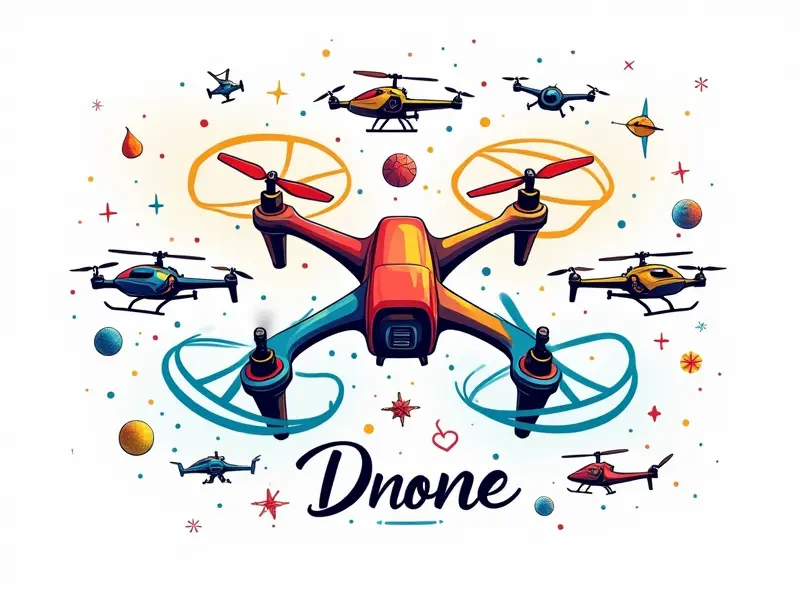Should FPV drone motors be hot?

FPV (First Person View) drone motors are critical components that determine the overall performance and longevity of your drone. As you fly, these motors generate heat due to friction and electrical resistance. This article delves into whether it's normal for FPV drone motors to heat up, why they get hot, optimal temperature ranges, impact on performance, cooling solutions, troubleshooting tips, motor lifespan effects, safe operating temperatures, benefits of warm motors, and ways to prevent overheating.
Is It Normal for FPV Motors to Heat Up?
Yes, it is completely normal for FPV drone motors to heat up during operation. The process involves converting electrical energy into mechanical work, which inevitably generates heat. However, the extent of heating can vary based on factors such as motor size, load, and RPM (Revolutions Per Minute).
Why Do FPV Motors Get Hot?
FPV motors get hot due to several reasons:
- Electrical Resistance: As current flows through the motor windings, resistance generates heat.
- Mechanical Friction: The interaction between rotating parts and bearings produces frictional heating.
- Copper Losses: I2R losses occur when electrical current passes through the motor's copper windings, leading to heat generation.
- Iron Losses: Hysteresis and eddy currents in the iron core contribute to heating.
Optimal Temperature for FPV Drone Motors
The optimal temperature range for an FPV drone motor typically falls between 60°C (140°F) to 85°C (185°F). Within this range, the motor operates efficiently without compromising performance or longevity.
Impact of Motor Heat on FPV Performance
Moderate heating is acceptable and expected, but excessive heat can negatively impact performance:
- Degradation in Efficiency: Increased internal resistance leads to reduced power output.
- Bearing Wear: High temperatures accelerate wear on bearings and brushes.
- Lubricant Breakdown: Extreme heat can cause lubricants to break down, leading to increased friction and failure.
Cooling Solutions for Hot FPV Drone Motors
To manage motor temperature, consider the following cooling methods:
- Airflow Enhancements: Ensure sufficient airflow around the motors by designing props or frames that promote air circulation.
- Cooling Fans: Install small fans near motors to actively cool them down.
- Heat-Sink Design: Incorporate heat sinks into motor mounts for passive cooling.
Are Hot Motors Good for FPV Drones?
Moderately warm motors are generally acceptable, but excessively hot motors can be detrimental. A balance is crucial to ensure optimal performance and longevity.
Troubleshooting Hot FPV Motors
If your FPV drone's motor is abnormally hot:
- Check Load: Ensure the load isn't too high for the motor's capacity.
- Analyze RPMs: Verify that motors aren’t spinning at an excessively high speed.
- Inspect Connections: Look for loose or damaged wires causing resistance issues.
Effects of Heat on FPV Drone Motor Lifespan
Prolonged exposure to excessive heat can significantly reduce the lifespan of an FPV drone motor by accelerating wear and tear, leading to premature failure.
Safe Operating Temperatures for FPV Motors
Maintaining temperatures between 60°C (140°F) and 85°C (185°F) ensures safe operation without compromising performance or longevity. Use thermal sensors or thermocouples to monitor motor temperature.
Benefits of Warm FPV Drone Motors
A warm motor indicates that the drone is functioning as intended, with moderate heating being a sign of efficient power conversion and mechanical operation.
Preventing Motor Overheating in FPV Drones
To prevent overheating:
- Select Appropriate Motors: Choose motors that match the drone's requirements for size, weight, and performance.
- Balanced Prop Design: Use props that provide sufficient lift without overloading the motor.
- Regular Maintenance: Keep motors clean and well-lubricated to reduce friction and heat generation.
Conclusion
Moderate heating of FPV drone motors is a normal occurrence during operation, but excessive heat can lead to performance degradation and reduced lifespan. By understanding the causes of motor heating, implementing appropriate cooling solutions, and maintaining optimal operating temperatures, you can ensure your FPV drone performs at its best for longer periods.

